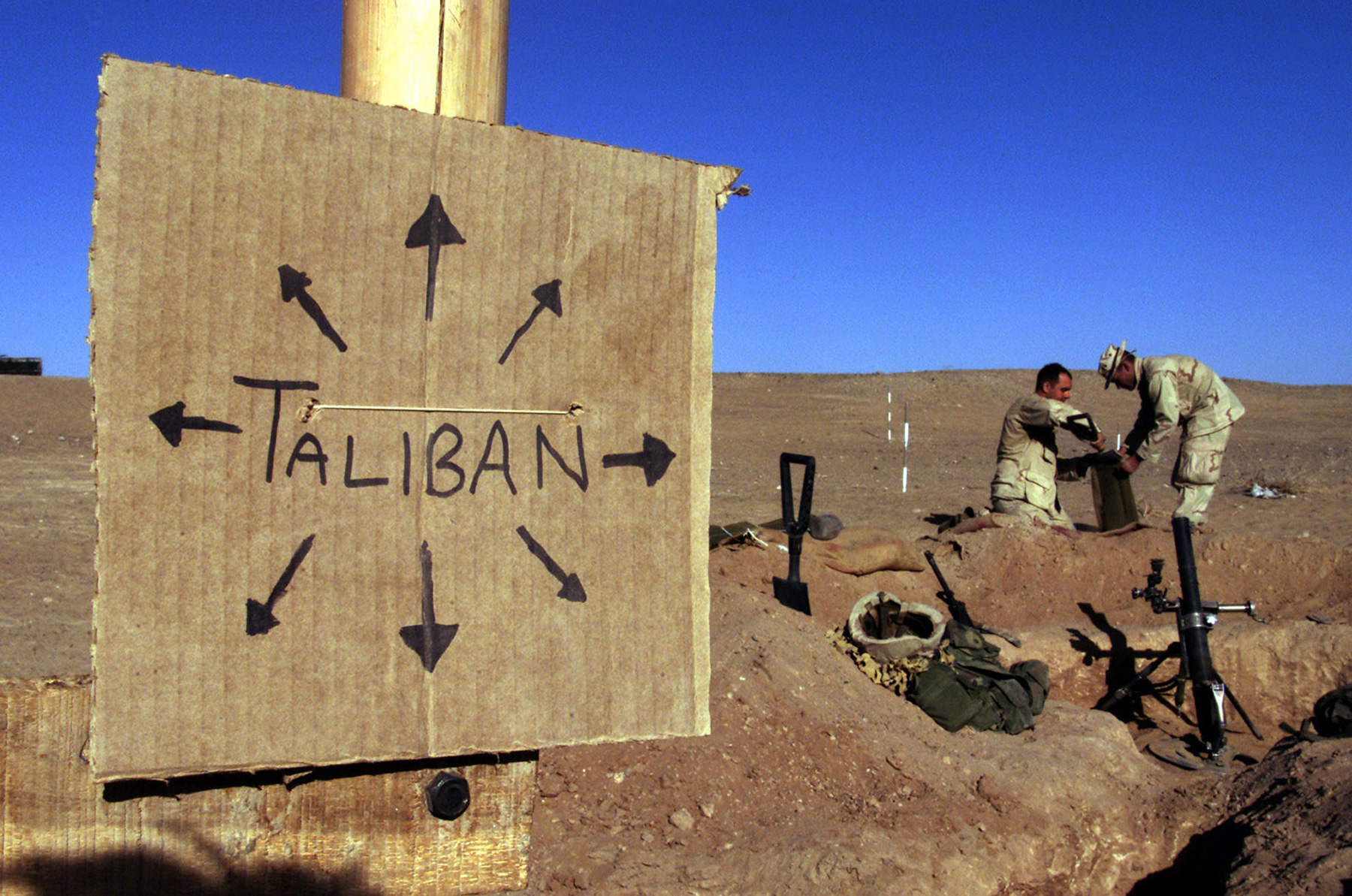Beijing’s approach to Central Asia and Afghanistan is not comparable to that of the United States or the Soviet Union in that Beijing is offering to deploy its military troops as compensation for paying the debts of countries, with the agreement of the local governments.
As of today, all Central Asian countries are economically dependent on China for both exports and imports of goods, especially medical equipment and pharmaceuticals where Beijing is a world leader; and the debt is growing.
Chinese diplomacy in Central Asia is not based on soft power as Beijing opposes the spread of Islam, an attitude that offends Central Asian citizens, and there is little exposure to the Chinese language or spontaneous adoption of Confucianism considering China’s economic prominence in the region.
Beijing is specifically interested in this region because it is in Afghanistan, one of the strongholds for Islamic terrorism, and easy to send troops from the mainland. With the withdrawal of American forces and the reduction of NATO’s presence expected in September 2021, China can then try to replace the United States in the region.
While the international community focuses on the Uyghur Muslim and the Wakhan Corridor, the main threat to the Central Asian states will continue to be the lack of water supplies. China will have to ensure the security of its own national water resources but also develop an approach to supply the countries of Central Asia with blue gold to avoid a major economic crisis that could harm Chinese gas supplies and the development of the Belt and Road Initiative (BRI).
The People’s Republic of China has become increasingly interested in the Central Asian countries—Kazakhstan, Kyrgyzstan, Tajikistan, Turkmenistan, and Uzbekistan—for both internal and external motives. As such, the resurgence of terrorism and religious extremism—Islamic and Buddhist—in mainland China has prompted Beijing to increase its upstream presence with military troops stationed in the Wakhan Corridor in Afghanistan (officially to combat narcotics trafficking) while implementing a policy of re-educating Uyghur Muslim dissidents in the Xinjiang Uyghur Autonomous Region in Northwest China.
Beijing’s approach has been severely criticized in the United States and Europe, and Western countries are exploiting the Xinjiang Vocational Education and Training Centers (Xinjiang internment camps) to damage Beijing’s international image, without necessarily taking into account the reality on the ground in a region of the world where China’s policy is helping to contain the spread of Islamist groups, including ISIS.
The Chinese dual approach, which is essentially aimed at containing radical Islamism in the immediate periphery and at home, is likely to be reinforced in the years to come, as the U.S. Department of Defense recently announced the withdrawal of American troops from Afghanistan, thus leaving Beijing in charge of security in the region, as Central Asian states do not have the financial and logistical means (e.g. GEOINT) to contain the spread of terrorism. The Chinese presence also avoids the need to ask for help from Russia, whose involvement is often perceived as a form of “post-Soviet colonialism.”
In Central Asia, where resources—especially water—are scarce, coupled with a high birth-rate and a lack of economic and military means, Beijing’s presence is seen as an economic advantage by all, although it gives rise to differing political views regarding such topics as religion.
While China is a technological leader and the best economic opportunity for Central Asian states, Beijing’s approach to curbing the spread of Islam is frowned upon by many Central Asian countries. As a matter of fact, Islam has grown in influence since the disappearance of shamanism (the native religion of the Central Asian peoples) and the end of the Soviet Union (atheistic policy), which is nowadays leading to growing diplomatic divergences between China and the neighboring states.
Chinese Politics in Central Asia
Beijing’s approach to Central Asia and Afghanistan is not comparable to that of the United States or the Soviet Union in that Beijing is offering to deploy its military troops as compensation for paying the debts of countries, with the agreement of the local governments.
As of today, all Central Asian countries are economically dependent on China for both exports and imports of goods, especially medical equipment and pharmaceuticals where Beijing is a world leader; and the debt is growing.
Initially, the Central Asian countries tried to balance their trade with Beijing, notably by exporting gas. China imported a total of 43 billion cubic meters (bcm) from Central Asia in 2019, according to the estimates from the BP Statistical Review. Back in 2010, that figure was just 3.4 bcm. Turkmenistan, Central Asia’s largest gas exporter, became especially dependent on China when its exports to Russia slid to zero in 2016. In mid-2019, Russia agreed to resume importing 5.5 bcm per year of gas from Turkmenistan, a fraction of what goes to China.
It soon became clear, however, that selling gas would not be enough to pay off the debts, which meant Beijing was given the option of stationing troops in countries such as Afghanistan with the approval of the neighboring states.
Therefore, Chinese diplomacy in Central Asia is not based on soft power as Beijing opposes the spread of Islam, an attitude that offends Central Asian citizens, and there is little exposure to the Chinese language or spontaneous adoption of Confucianism considering China’s economic prominence in the region.
Beijing adopts a similar attitude; and while countries, such as Kazakhstan, are a necessary route for the transit of Chinese products to the European Union and Great Britain, China sees the Central Asian countries as antagonists due to their religion and to historical factors, as the former nomadic conquerors (e.g. Genghis Khan) still leave a negative resonance in the Chinese mind. In addition, there are territorial disputes between China and Kyrgyzstan/Tajikistan, which hinders any deep development of diplomatic relations with Beijing when one considers the importance China attributes to its territorial sovereignty (e.g. Taiwan and the Diaoyutai Islands).
As such, cultural differences push China to cooperate with Central Asian countries within the framework of international organizations, such as the Shanghai Cooperation Organization, rather than on a one-to-one level, allowing it to take a global view in the region and avoid mentioning bilateral frictions.
Chinese Military Approach in Central Asia
In contrast to the cultural dimension (soft power), China has a more proactive stance in the military sector. For instance, it collaborates with Russia, the Collective Security Treaty Organization (CSTO) members and with the countries of Central Asia in carrying out joint military exercises.
Moscow and Beijing moved their relations towards a global strategic partnership of coordination in a new era, committing themselves to closer coordination on global security issues and mutual support. For the second consecutive year, China took part in the Russian strategic command and staff exercise (TSENTR-2019) held this year in the Russian Central Military District. The aim of the exercise was to test the readiness levels of the Russian army and interoperability between regional partners, while simulating a response to terrorist threats in Central Asia. China represented the largest foreign contingent, deploying some 1,600 ground and air troops from the PLA Western Theatre Command and nearly 30 planes and helicopters, including H-6 bombers.
However, in the Chinese perception, Central Asian countries are of little military relevance and Russia remains the main partner, so exercises with Central Asian and CSTO countries are a way to strengthen cooperation with Moscow but not fundamentally with the Central Asian countries.
This Chinese vision seems relevant insofar as Kazakhstan, Kyrgyzstan, Tajikistan, Turkmenistan and Uzbekistan are not nuclear powers and do not have sufficient military means to envisage an equal partnership with Beijing. China’s military budget in 2020 was $252 billion, while that of Central Asia as a whole was $2.2 billion
in the same year.
Beijing is therefore using the motive of joint exercises and the repayment of national debts of the countries in the region to increase its military presence, especially in the Wakhan Corridor.
The Wakhan Corridor
The Wakhan Corridor is a narrow strip of territory in Afghanistan, extending to China and separating Tajikistan from Pakistan and Kashmir. The corridor, wedged between the Pamir Mountains to the North and the Karakoram range to the South, is about 350 km long and 13-65 kilometers wide and has been used as a trade route to connect China since antiquity.
Beijing is specifically interested in this region because it is in Afghanistan, one of the strongholds for Islamic terrorism, and easy to send troops from the mainland. With the withdrawal of American forces and the reduction of NATO’s presence expected in September 2021, China can then try to replace the United States in the region. Furthermore, the Corridor leads directly to the Chinese border, and Beijing’s (unofficial) military base in the region ensures control of the illegal traffic of drugs and weapons.
In addition, having a facility in the area allows for rapid intervention in the two countries that share a border with the Corridor—Tajikistan and Pakistan—with the latter also known to be a bastion for terrorist hiding from the rest outside world (e.g. Osama bin Laden).
Unlike in the case of Djibouti, China refused to openly mention its military presence in the Corridor and has used the fight against drug trafficking as an excuse since a number of reports of a permanent Chinese military presence have emerged. The reason for this Chinese secrecy is due to several factors:
-
It is likely that a large part of the military activities is actually fighting against drug trafficking which is common in the area (Afghan opium) [1];
-
The Chinese presence in Djibouti has been seen by the United States, France, Italy and Japan as a significant development that aims to supplant their influence on the continent. Similarly, such open display of Chinese ambitions in Central Asia has reinforced international apprehension about China’s global military ambitions.
Although aware of China’s activities in the Corridor, the Kremlin could perceive a Chinese official communication on this subject as a deliberate choice by Beijing to challenge Russian military influence in the post-Soviet space.
Russia’s presence has been limited since the end of the USSR and the end of the war in Afghanistan (1979-1989), and apart from the Russian language, Moscow is now a secondary economic partner in Central Asia, behind China, so the loss of Russian military influence could be misinterpreted.
China and the Water Crisis in Central Asia
While the international community focuses on the Uyghur Muslim and the Wakhan Corridor, the main threat to the Central Asian states will continue to be the lack of water supplies, which will lead to conflicts between countries in the region and, perhaps, with neighbors such as China and Russia.
The mismanagement of water resources had been a recurring theme in the CIA’s analyses, which as early as the 1960s mentioned the long-term effects of overuse of the available capacities. Since the fall of the Soviet Union, the newly independent Central Asian countries have failed to implement a relevant strategy to save water and stem population growth, ultimately leading to an emerging crisis.
China will have to ensure the security of its own national water resources but also develop an approach to supply the countries of Central Asia with blue gold to avoid a major economic crisis that could harm Chinese gas supplies and the development of the Belt and Road Initiative (BRI).
Researchers at Oxford University ran 738 simulations combining possible changes in water consumption with 80 future climate scenarios, ranging from warmer and drier to warmer and wetter conditions. Most of the simulations point to the same grim conclusion: Central Asian states are running out of water.
The lack of water is not only due to a poor management on Central Asian states. In 2020, an American-Kazakh-Chinese team using satellite data estimated that irrigated cropland on the Chinese side increased nearly 30 percent between 1995 and 2015, and they found no significant increase on the Kazakh side in the same period.
To avoid further tensions, a long-term option for China would be to provide water management solutions to Central Asian countries in exchange for the gas and other resources they have to offer.
Conclusion
Chinese military presence is expected to increase from September 2021 because of the withdrawal of American troops from Afghanistan. Although critical of its national policy towards the Uyghur, the fight against terrorism in China and abroad is producing results in a region of the world where radical Islamism abounds.
The Chinese military presence is, therefore, an opportunity for the Central Asian countries, but also for the Western world insofar.
Although it may seem paradoxical, Pakistan as a Muslim country has understood the importance of China’s policy; for this reason, Islamabad continues to serve as Beijing’s communication bridge to the Muslim world.
In 2016, China announced that it will set up an anti-terrorism alliance including Pakistan, Afghanistan, and Tajikistan, while in December 2018, Pakistan’s government even defended China’s re-education camps for Uyghur Muslims.
Pakistan’s support for China’s policies is not an excuse for practices that violate human rights, but attests to the Islamic threat in the region that is detrimental to its development.
The water crisis is also going to be a fundamental factor in the development of terrorism and extremism in Central Asia from the summer of 2021, as the lack of resources drives the development of radical ideologies. For this reason, the water issue will certainly become central to BRI’s development policy and to bilateral relations between China and the whole of Central Asia.
1. In 2008, less than 8,000 tons were produced, mainly in Afghanistan, and this drug remains in Chinese minds because of the Opium Wars, two wars waged between the Qing dynasty and Western powers in the mid-19th century.








